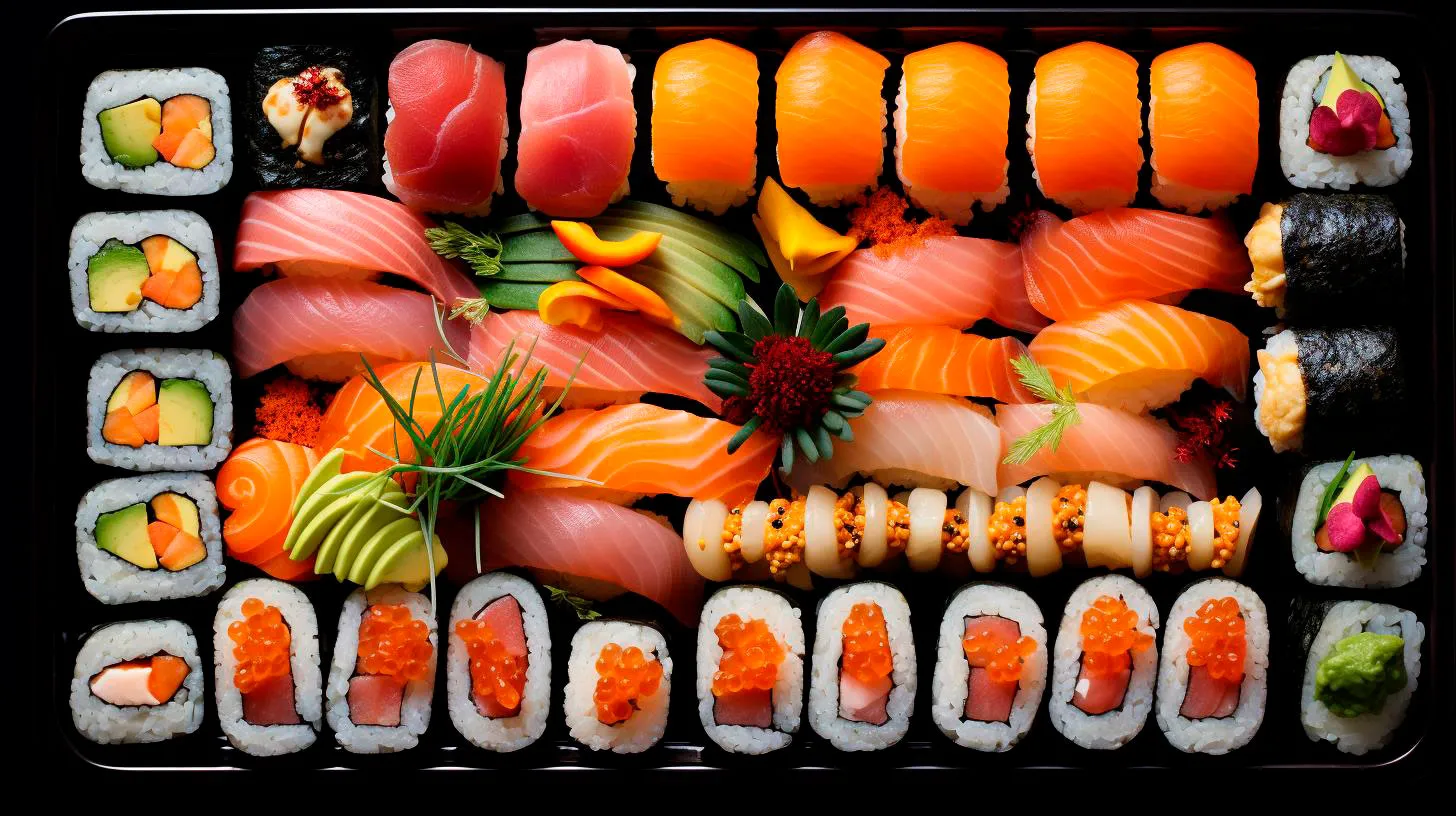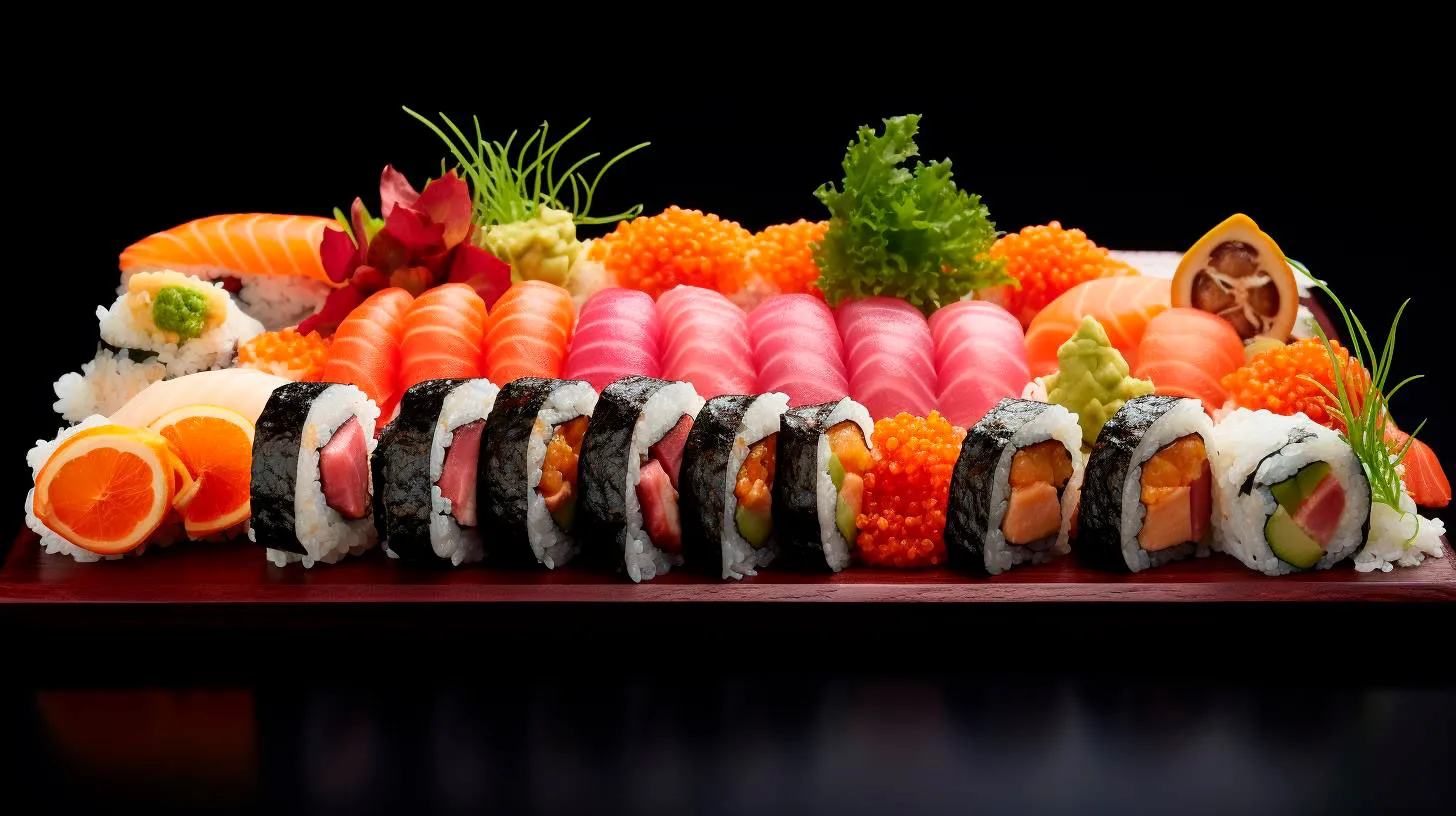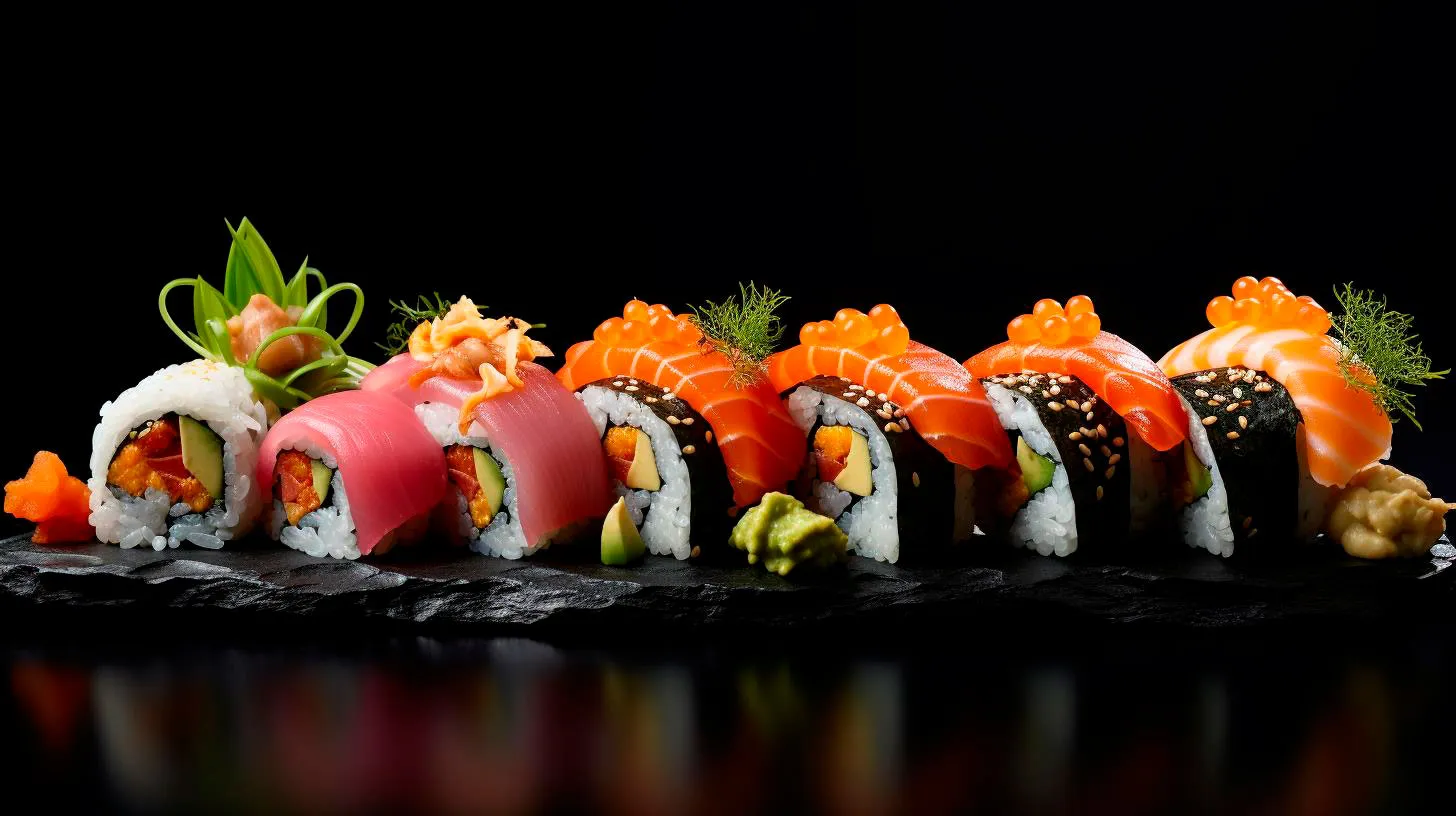The Intersection of Gastronomy and Photography
This article explores the fascinating relationship between gastronomy and photography and how they enhance each other.
Gastronomy: More Than Just Food
Gastronomy is not simply about food; it delves into the cultural, social, and even emotional aspects surrounding what we eat. It encompasses the entire gastronomic experience, from the preparation and presentation of food to the way it tantalizes our taste buds. In recent years, the rise of food blogging and social media platforms like Instagram has propelled gastronomy into the mainstream. And, at the center of this gastronomic revolution, lies photography.
The Power of Visual Storytelling
Photography has the unique ability to tell a story. It captures the colors, textures, and details that engage our senses and leave us craving for more. When it comes to gastronomy, photographs can transport us to a world of flavors and aromas, even before we take a single bite. A well-composed food photograph has the power to evoke emotions and create an unforgettable culinary experience.
Key Takeaways:
- Photography enhances the sensory experience of gastronomy.
- Food photographs have the power to evoke emotions.
- Well-composed images create an unforgettable culinary experience.
The Rise of Food Photography
The surge of smartphones with advanced cameras and social media platforms has turned practically everyone into a food photographer. Sharing pictures of beautifully plated meals has become a cultural phenomenon. In fact, a study conducted by OnePoll revealed that 69% of millennials take pictures of their food before eating it.
The proliferation of food photography has given rise to a new breed of professional food photographers, food stylists, and even gastronomy influencers. These individuals understand the importance of lighting, composition, and capturing that perfect moment when the food looks its absolute best. They work closely with chefs and restaurants to showcase their culinary creations in the most visually pleasing way.
Advantages of Food Photography:
- Allows restaurants and chefs to showcase their creations.
- Creates an opportunity for businesses to attract customers through visual appeal.
- Enables sharing of food experiences among friends and followers.
Visual Social Media Platforms
Visual social media platforms, particularly Instagram, have become a haven for gastronomy and food photography enthusiasts. A staggering 95 million photos and videos are shared on Instagram every day, and a large portion of these posts are food-related.
Instagram, with its visually focused platform, has given rise to food influencers and the “foodstagram” culture. These influencers have harnessed the power of Instagram to build a following by capturing and sharing stunning images of food. They collaborate with restaurants, brands, and fellow influencers, turning food photography into a lucrative career.
Key Takeaways:
- Instagram is a visual social media platform with a focus on food.
- Food influencers have capitalized on Instagram’s popularity.
- Foodstagram culture has turned food photography into a career.
Creating a Gastronomic Photography Experience
Restaurants and chefs are increasingly recognizing the importance of combining the culinary arts with photography. They understand that a visually appealing dish can attract customers, both in person and online. To create a successful gastronomic photography experience, several factors come into play:
- Lighting: Proper lighting is crucial for capturing the essence and details of the dish.
- Composition: Framing the food in an aesthetically pleasing way highlights its beauty.
- Props and backgrounds: Selecting the right props and backgrounds can enhance the overall storytelling.
- Editing: Post-processing techniques can further enhance the visual appeal of the photograph.
Restaurants that invest in creating visually stunning dishes and collaborate with skilled food photographers have a competitive advantage in attracting customers and building a loyal following.
Conclusion
The intersection of gastronomy and photography has forever changed the way we experience food. It has transformed the culinary world, engaging our senses not only through taste but also through visuals. The power of food photography lies in its ability to tell a story, evoke emotions, and create a truly remarkable gastronomic experience. From influencing our food choices to helping businesses thrive, the collaboration between gastronomy and photography is a match made in heaven.
Unveiling the Secret Connection Between Food and Aesthetics
But is there more to this connection between food and aesthetics than meets the eye? In this article, we will explore the secret link between food and aesthetics and uncover how it affects our perception of taste and overall dining experience.
Why Does Presentation Matter?
The saying “we eat with our eyes” couldn’t be more accurate. The presentation of a dish plays a significant role in our decision-making process when it comes to food. In fact, studies have shown that well-presented dishes are not only perceived as tastier but also more satisfying to consume. Here are a few reasons why presentation matters:
- First impressions: Visual appeal is the first thing we notice about a dish, and it sets the tone for our dining experience. A thoughtfully presented meal triggers anticipation and excitement, enhancing our enjoyment.
- Enhanced flavors: Well-executed plating can enhance the perception of flavors. By creating harmony between colors, textures, and arrangement, chefs can amplify the taste experience and create a sensory delight.
- Social media and food photography: In the age of social media, visually appealing food has become a sensation. People love sharing pictures of beautifully presented dishes, making presentation a vital aspect for restaurants and food businesses looking to attract customers and create a buzz.
The Psychology of Food Presentation
The connection between food and aesthetics goes beyond our taste buds. It delves into the realm of psychology, tapping into our subconscious minds to influence our dining experience. By understanding the psychology behind food presentation, chefs and food enthusiasts can create impactful and memorable moments. Here are some key takeaways:
- Color psychology: Colors have a profound impact on our emotions and perceptions. It’s no wonder that chefs carefully select vibrant ingredients to create visually appealing dishes. For example, the color red is associated with energy and appetite stimulation, while green evokes freshness and vitality.
- Plating techniques: The arrangement of food on a plate can evoke various emotions. A symmetrical plating style provides a sense of order and balance, while an asymmetrical arrangement can create intrigue and surprise. Chefs often leverage these techniques to captivate diners and elevate their culinary experience.
- Contrasts and textures: Pairing contrasting elements such as smooth and crunchy textures or blending flavors with different intensity levels adds excitement and complexity to a dish. These contrasts not only create a visually striking presentation but also stimulate the taste buds, making every bite a delightful experience.
The Role of Technology
Technology has further pushed the boundaries of food aesthetics, paving the way for innovative approaches to presentation. Here are some technological advancements in the culinary world:
- Molecular gastronomy: This scientific approach to cooking has revolutionized the way chefs present food. Through techniques like spherification or foams, chefs can create visually stunning and unexpected presentations that challenge our traditional notions of food.
- Food styling: With advancements in food styling techniques and tools, chefs can transform ingredients into works of art. From edible sculptures to intricately plated dishes, these creations provide a feast for the eyes that leave a lasting impression.
- Virtual reality (VR) dining: The integration of VR technology with dining experiences takes food aesthetics to a whole new level. By immersing diners in virtual environments, chefs can enhance the sensory experience, making the presentation even more captivating and memorable.
In conclusion, the secret connection between food and aesthetics is a fascinating aspect of our culinary experiences. From the psychological impact of colors and plating techniques to the technological innovations that push the boundaries of presentation, there is no doubt that the visual appeal of food significantly influences our perception and enjoyment. So, the next time you indulge in a beautifully presented dish, remember that there’s more than just taste on your plate.
Exploring the Visual Delights of Sushi
The Artistry of Sushi Presentation
Sushi is more than just a dish; it is a work of art meticulously crafted by skilled sushi chefs. The presentation of sushi is given paramount importance, with great attention to detail and aesthetics. Here are some key visual aspects that make sushi a stunning culinary experience:
- Colorful Ingredients: Sushi showcases a vibrant array of fresh ingredients, from pink-hued salmon and orange-colored roe to lush green seaweed and reds and yellows of assorted vegetables. This colorful palette not only enhances the visual appeal but also provides a sensory delight.
- Artistic Arrangement: Sushi is delicately arranged with precision and artistry. The positioning of each ingredient is carefully thought out, creating beautiful patterns, textures, and shapes that captivate the eyes. The unique presentation of sushi elevates it from a mere dish to a visual masterpiece.
- Garnishes and Decorations: Sushi is often decorated with various garnishes and artistic accents. These may include delicate edible flowers, ornate carved vegetables, or finely shredded radish. These embellishments not only enhance the aesthetic appeal but also demonstrate the creativity and attention to detail of the sushi chef.
The Visual Experience of Enjoying Sushi
The visual delights of sushi extend beyond its presentation. When served at a sushi bar or restaurant, the entire dining experience becomes a visual extravaganza. Consider these key factors that contribute to the sensory pleasure of enjoying sushi:
- Sushi Bar Aesthetics: Sushi bars are often designed with elegant simplicity, featuring sleek wooden counters, minimalistic décor, and soft ambient lighting. This sophisticated setting allows the focus to be on the sushi itself, creating a serene atmosphere conducive to savoring the visual and culinary experience.
- Open Kitchen Concept: Many sushi restaurants adopt an open kitchen concept, enabling patrons to witness firsthand the craftsmanship and precision involved in sushi-making. The sight of expert chefs meticulously preparing each piece of sushi adds an element of excitement and enhances the visual appeal.
- Plating Perfection: Sushi is typically served on beautiful ceramic or lacquerware plates that elevate the dining experience. The contrast between the colorful sushi and the clean, elegant plates creates a visual harmony that is both pleasing and appetizing.
The Global Fascination with Sushi
Sushi’s visual beauty has helped propel it to global fame, with sushi restaurants and bars found in nearly every corner of the world. Its popularity can be attributed not only to its incredible taste but also to its stunning visual appeal. Let’s take a look at some interesting statistics that reflect the widespread fascination with sushi:
Key Statistics:
- Sushi has become a 17 billion dollar industry worldwide, with annual growth projected at 4.4% (source: Statista).
- The United States alone consumes over 2.25 billion sushi rolls each year (source: Forbes).
- Japan has over 45,000 sushi restaurants, providing an unparalleled variety and quality of sushi (source: Food & Wine).
- Sushi is the most Instagrammed food globally, with over 24 million hashtags (source: Wayfare Magazine).
Key Takeaways
Exploring the visual delights of sushi reveals a world where culinary artistry intertwines with the senses. Here are the key takeaways:
- Sushi’s artistic presentation and vibrant ingredients make it a visual feast.
- The artistry behind sushi’s presentation showcases the skill and creativity of sushi chefs.
- The visual experience of enjoying sushi extends to the ambiance and aesthetics of sushi bars.
- Sushi’s global popularity is a testament to its stunning visual appeal.
Next time you indulge in sushi, remember to take a moment to appreciate the visual delight it offers. Whether through its colorful arrangement, artistic presentation, or the overall dining experience, sushi has us constantly captivated with its eye-catching allure.


